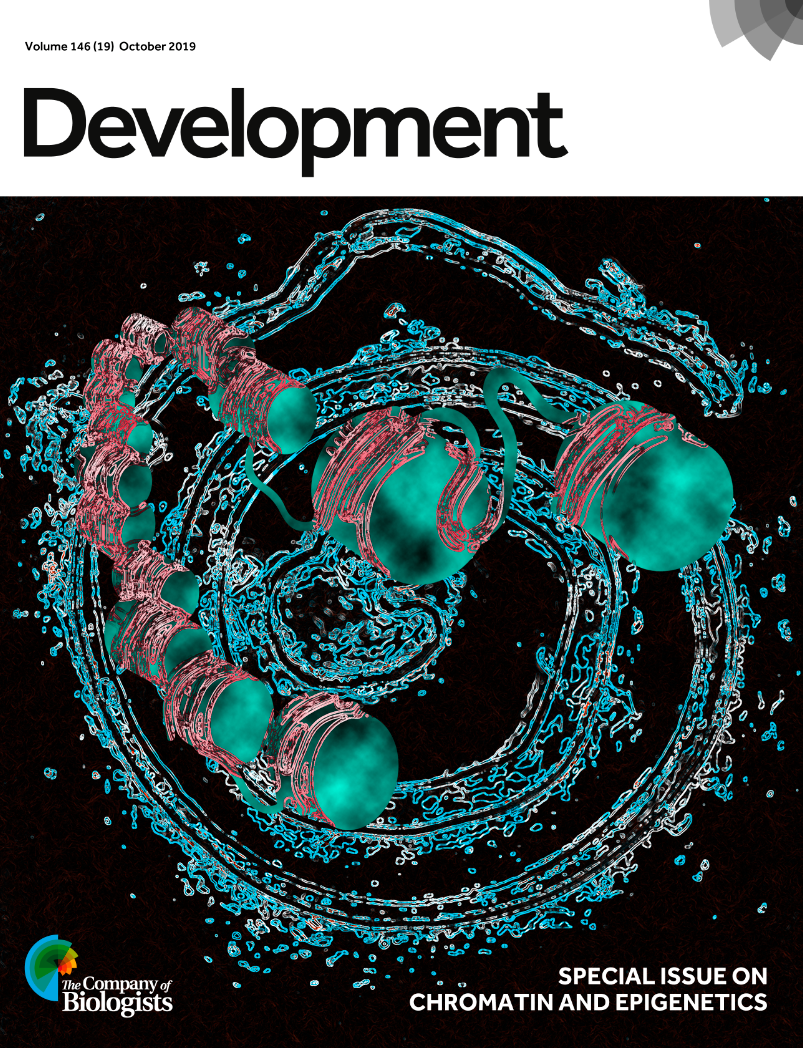Chromatin and epigenetics in development: a Special Issue
Posted by the Node, on 15 October 2019
This editorial was recently published in Development and written by our editors Benoit Bruneau, Haruhiko Koseki, Susan Strome, Maria-Elena Torres-Padilla. Check out the Special Issue’s full table of contents here.
The development of an organism is regulated by tightly coordinated changes in gene expression. From zygotic gene activation, through to lineage specification and organogenesis, and into postnatal physiology and disease, broad programs of gene activation and repression are deployed in a carefully orchestrated manner. Eventually, the deployment of such developmental programs results in the formation of hundreds of different cell types, all containing the same DNA. Based on this, Conrad Waddington proposed more than half a century ago that development is an example of his epigenetic landscape.
DNA-binding transcription factors (TFs) are the leading drivers of these dynamic and cell type-specific gene regulatory networks, but TFs must function within the topological and physical constraints presented by the dense packing of DNA in chromatin, and within the context of histone modifications, DNA methylation and other aspects of chromatin-mediated regulation. All of these aspects of gene regulation – from TF binding sites, to nucleosomes, to topologically associated domains – are emerging as interlocked layers of developmentally important gene regulation.

In this Special Issue, we feature the myriad levels of chromatin regulation that impact developmental gene regulation. The Spotlights, Reviews and Research articles herein span topics covering TF interactions with chromatin, histone modifications, chromatin remodelers, DNA methylation, RNA-binding proteins and 3D organization of the genome. All of these levels of gene regulation have clear and broad roles in development, as exemplified by the variety of processes that are featured. These include limb patterning, cardiac differentiation, intestinal development, heart regeneration, zygotic genome activation, control of pluripotency, retrotransposon regulation, cell cycle regulation, dosage compensation, and maintenance of the body plan. Moreover, multiple experimental systems including Caenorhabditis elegans, zebrafish, mice, and human embryonic stem cells are featured, bringing into focus the broad importance of chromatin as an essential component of developmental control.
One Spotlight article features a summary of a discussion that was held at a recent workshop on ‘Chromatin-based regulation of development’ (https://www.biologists.com/workshops/april-2019/) organized by The Company of Biologists. The discussion centered on emerging evidence for the role of 3D genome organization and phase-separated condensates as potentially important regulators of gene expression. The discussion was lively, and the Spotlight captures the essence of the insights and controversies in the field. A second Spotlight highlights a new field of research termed ‘EvoChromo’ that considers the origin and evolution of chromatin, while several timely Reviews synthesize important and sometimes overlooked aspects of gene regulation in development. For example, how do chromatin remodelers find the right loci to act upon to achieve specificity? How do histone modifications participate in developmental disorders? What role does heterochromatin serve in controlling cell identity? What are the optimal means to visualize 3D genome organization?
With the emergence of exciting new technologies and paradigm-shifting insights, we now appreciate how chromatin and epigenetics are complex and important developmental regulators. This Special Issue highlights many of these exciting new aspects of developmental biology, and will hopefully inspire our readers to explore this field further. We would like to thank everyone – authors and reviewers – who contributed to this Special Issue and hope you will consider sending your next manuscript on this topic our way!
These movies from Hiroshi Kimura and colleagues’ Techniques and Resources article in the Special Issue are the latest addition to our YouTube channel


 (1 votes)
(1 votes)